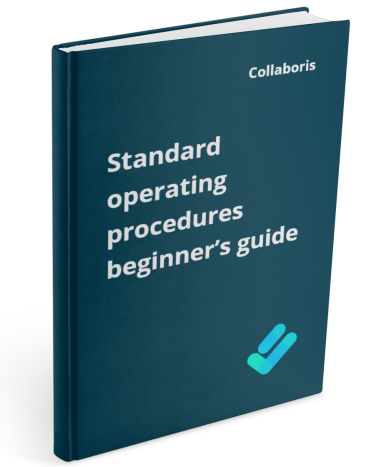Policy Approval Workflow Automated policy approval workflows offer several benefits that can significantly enhance ...
Process Standardization: A Key to Business Success
Process standardization refers to the practice of establishing a set of uniform procedures and guidelines for carrying out specific tasks or activities within an organization. It involves creating a consistent approach to work processes, which can be replicated across different departments and locations.
Why does it help?
Process standardization helps organizations achieve greater efficiency, consistency, and quality in their operations. By streamlining workflows and eliminating unnecessary variations, businesses can reduce errors, improve productivity, and enhance customer satisfaction.
One of the key benefits of process standardization is that it enables organizations to identify and eliminate inefficiencies in their operations. By establishing clear guidelines and procedures, businesses can ensure that tasks are completed in a consistent and efficient manner, reducing the risk of errors and delays. This not only improves productivity but also enhances the quality of the end product or service, leading to greater customer satisfaction. Additionally, standardized processes make it easier for employees to understand their roles and responsibilities, which can boost morale and reduce turnover rates. Overall, process standardization is an essential tool for any organization looking to improve its operations and stay competitive in today's fast-paced business environment.
Myth busting about process standardization
Contrary to popular belief, process standardization does not stifle creativity or innovation. Instead, it provides a framework for employees to work within, freeing them up to focus on more value-added activities. Additionally, standardization does not mean that all processes must be identical; rather, it allows for flexibility within established guidelines.
The benefits of process standardization
Process standardization offers a multitude of advantages that can significantly improve the overall performance of an organization. These benefits include:
- Enhanced efficiency and productivity, which can lead to increased profitability and growth.
- Reduced errors and rework, resulting in cost savings and improved customer satisfaction.
- Improved quality and consistency of products or services, leading to greater customer loyalty and retention.
- Increased customer satisfaction due to consistent and reliable delivery of products or services.
- Better compliance with regulations and standards, which can help avoid legal issues and penalties.
- Greater agility and scalability, allowing organizations to adapt quickly to changing market conditions and customer needs.
By implementing standardized processes, organizations can streamline their operations, reduce waste, and optimize their resources. This can result in significant cost savings and improved profitability. Standardization also helps to eliminate variations in processes, reducing the likelihood of errors and rework. This leads to improved quality and consistency, which is essential for building customer trust and loyalty.
In addition, standardization can help organizations comply with regulations and standards, which is critical for avoiding legal issues and penalties. By following established procedures, organizations can ensure that they are meeting all necessary requirements and operating within the bounds of the law.
Finally, process standardization can help organizations become more agile and scalable. By establishing clear procedures and protocols, organizations can respond quickly to changes in the market and customer needs. This allows them to stay ahead of the competition and maintain their position as industry leaders.
Overall, the benefits of process standardization are clear. By implementing standardized processes, organizations can improve efficiency, reduce errors, enhance quality, increase customer satisfaction, comply with regulations, and become more agile and scalable.
Tired of reminding staff to read your company policies?
DocRead makes compliance simple
The difference between automation and standardization
Automation involves using technology to perform tasks automatically, process standardization focuses on creating a consistent approach to work processes. While automation can support standardization efforts, it is not a substitute for it. Standardization ensures that processes are carried out consistently, while automation can help to streamline those processes.
It is important to note that automation and standardization are not always mutually exclusive. In fact, they can work together to create a more efficient and effective workflow. By standardizing processes first, organizations can then identify areas where automation can be implemented to further improve efficiency. This approach ensures that the benefits of automation are maximized while maintaining consistency in work processes. Ultimately, the combination of automation and standardization can lead to significant cost savings, increased productivity, and improved quality of work.
Which processes should you standardize?
Not all processes need to be standardized. Organizations should focus on standardizing processes that are critical to their operations, have a high impact on customers, or are prone to errors. It is also important to involve employees in the process of identifying which processes to standardize, as they are often the ones who have the most knowledge about how things are done.
How to ensure employee engagement in the process standardizing process
Employee engagement is of utmost importance when it comes to the success of process standardization initiatives. In order to guarantee that employees are fully engaged, organizations must involve them in the process right from the start. This can be achieved by seeking their input on which processes should be standardized, offering training and support, and acknowledging and rewarding their contributions. Furthermore, it is crucial to communicate the advantages of standardization to employees, so they understand how it will benefit both themselves and the organization as a whole. By doing so, employees will feel valued and motivated to participate in the process, resulting in a more successful outcome.
In conclusion, process standardization is a key component of business success. By establishing consistent procedures and guidelines, organizations can achieve greater efficiency, quality, and customer satisfaction. While it may require some effort to implement, the benefits are well worth it.
Get your free Standard Operating Procedures guide
Creating Standard Operating Procedures for your organisation doesn't have to be complicated. This guide will introduce you to the whole lifecycle from creation to training and distribution.
You may also like:
January 17, 2025
January 7, 2025
Creating policy review reminders in Office 365 You might want to set up a ...
December 19, 2024
Podcast: Implementing effective healthcare procedures Implementing effective healthcare procedures is an ongoing process. It ...
December 19, 2024
Podcast: 10 Powerful Strategies for Employee ComplianceOrganizations face challenges in ensuring employee compliance with ...
December 8, 2024
AI Warns About Itself: How I Asked AI to Create a Podcast on the ...
November 4, 2024
Benefits of writing SOP's In any organization, standard operating procedures (SOPs) are critical to ...


